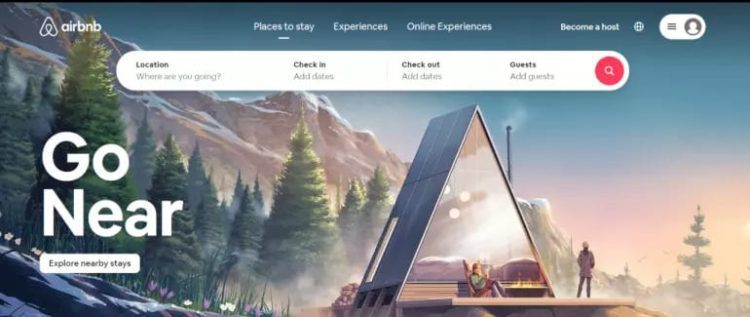Corinne Sharabi
Corinne is the Social Media and Content Lead at BLEND. She is dedicated to keeping global business professionals up to date on all things localization, translation, language and culture.

To avoid time-consuming back and forth discussions with your translator and make both of your jobs easier, there’s one simple thing you can do – provide a good translation brief.
So, you’ve made the decision to expand your business. You know it will be more lucrative for you to reach customers around the world, and you’ve teamed up with an LSP to make it happen. But how do you make sure the translations remain on-brand, avoiding the need for future manual edits? What is the key to doing localization right? The answer is simple: write a good brief.
As any of our translators or clients will tell you, the responsibility for producing consistently on-brand translations doesn’t lie purely on the shoulders of the language specialist. Without a detailed, specific brief, it’s impossible to identify preferred translation terms, ensure the desired length to accommodate formatting limitations, and understand contextual relevance.
Why is this so important? You don’t want your brand being added to the list of infamous localization fails that other companies have fallen victim to when entering new markets. Take Parker Pens, whose English slogan “It won’t leak in your pocket and embarrass you” became “It won’t leak in your pocket and make you pregnant” when mistranslated into Spanish. Or the infamous “Got Milk?” campaign, which was almost launched in Mexico with the translation “Are you lactating?” before someone luckily caught it in the market research phase.
So, in order to make sure you avoid miscommunications and minimize these cringeworthy localization mistakes, we’ve put together some tips for what your translation brief should cover.
Who is your target persona? Are they young or old? Big spenders or thrifty? Casual or professional? By providing your translator with information about your target audience, he or she can tailor the text to appeal to them not only on a local level, but also on a personal level.
For example, if your text is aimed at professionals in a specific industry, it’s okay – and even recommended – for the translator to use industry jargon in their translation. However, if it’s aimed at laypeople, that jargon would fly over their heads and you would lose your audience. On the flip side, not sounding like an industry professional when that is your target audience could cause you to lose credibility amongst professionals.
Aside from who the content is targeting, it’s important to make clear what purpose the translation ought to serve. Are you translating a marketing email and looking to influence customer purchasing? Or perhaps a product manual with the goal of increasing user understanding and product usage? Are you translating a press release aimed at establishing brand awareness? Answering questions like these will provide your translator with the context needed to best convey your message and achieve your ultimate goal.
When you’re knee-deep in a project, it’s easy to forget that not everyone else is as deep as you. If your project involves multiple parts, it’s important to set deadlines and make your priorities clear. You don’t want to end up stuck because something isn’t finished when you expected, and your translator will work better if they can plan out their next steps.
Perhaps you have a large website localization project. The H1s and H2s are the most important and should be translated first, as the design team is waiting for them – and once you finalize the translation, the design team will need to adjust formatting and introduce additional iterations. The meta tags and descriptions, however, are far less important, as the SEO team will only input them the last week before the site goes live. These are the types of details that a translator needs to know to work with you efficiently.
In the process of translating, text length can change significantly depending on the language – as is often the case with English to Spanish translations – or it might even be written in the opposite direction – as in Hebrew and Arabic – which completely changes how text appears on a page. These considerations are especially important when translating text on images, brochures, landing pages, and other materials where placement and layout matter. Make sure to specify to your translator if there are length restrictions, or if you want things to look a certain way, in order to get optimal results.
For example, in English, your app might contain a button that says “Click Here”. Although in English this CTA is short, it might turn out to be too long for the size of the button in other languages. Or perhaps your homepage only has limited space for a website header, and a verbatim translation may not fit. It’s important in these instances to let your translator know whether the design for their language will be individually formatted after translation, or whether or all translations should be adapted to the English format, and therefore the length should stay the same – even if it means playing with the exact wording in their language.
Another consideration is whether your entire flow, down to the small details, should be localized. Should currencies be converted when pricing is mentioned on the website? Do you want the exact same words in bold or italics that appear as such in English? Or should this formatting vary based on the language? Should your translator keep hyperlinks pointing to English pages? Or do you want them to find the relevant link on the company website in the appropriate language? These are important aspects to instruct your translators on in your brief.
This is especially useful if you have a big, multi-part project, or plan to submit multiple projects in the future – but you can still provide a glossary and style/writing guide even for a one-off translation project. If you have specific words that you want to use that are part of your branding, or you like certain ideas expressed with specific terms, a glossary or guide can explain this to the translator. Sometimes, translators get creative in order to make something sound better in their language. While this is generally a good thing, it may or may not be what you want. Providing these guidelines could make sure the translation stays true to the messaging you want to convey.

Take Airbnb’s homepage heading back in 2020 during the COVID-19 pandemic. When they translated this to other languages for their multilingual website’s translation, they needed to decide whether to instruct their translators to translate this exact wording, or focus on the concept and use a slogan that will appeal to the locals.
It seems they went with the latter. Take the Spanish site, which commands users to “Escape”, or the inspiring Italian text which states “Close is beautiful”. While “Go Near” works for English-speaking markets, Airbnb knew that translating the messaging was more important than the exact wording in this case.
When it comes down to it, the more details you give, the more likely the delivery will fulfill your localization brief on the first go. Maybe not everything above applies to your personal or business translation needs, but keeping in mind our tips for putting together a translation brief will help your translator avoid mistakes, and make sure you get more accurate translations and achieve your goals.
What our customers are saying